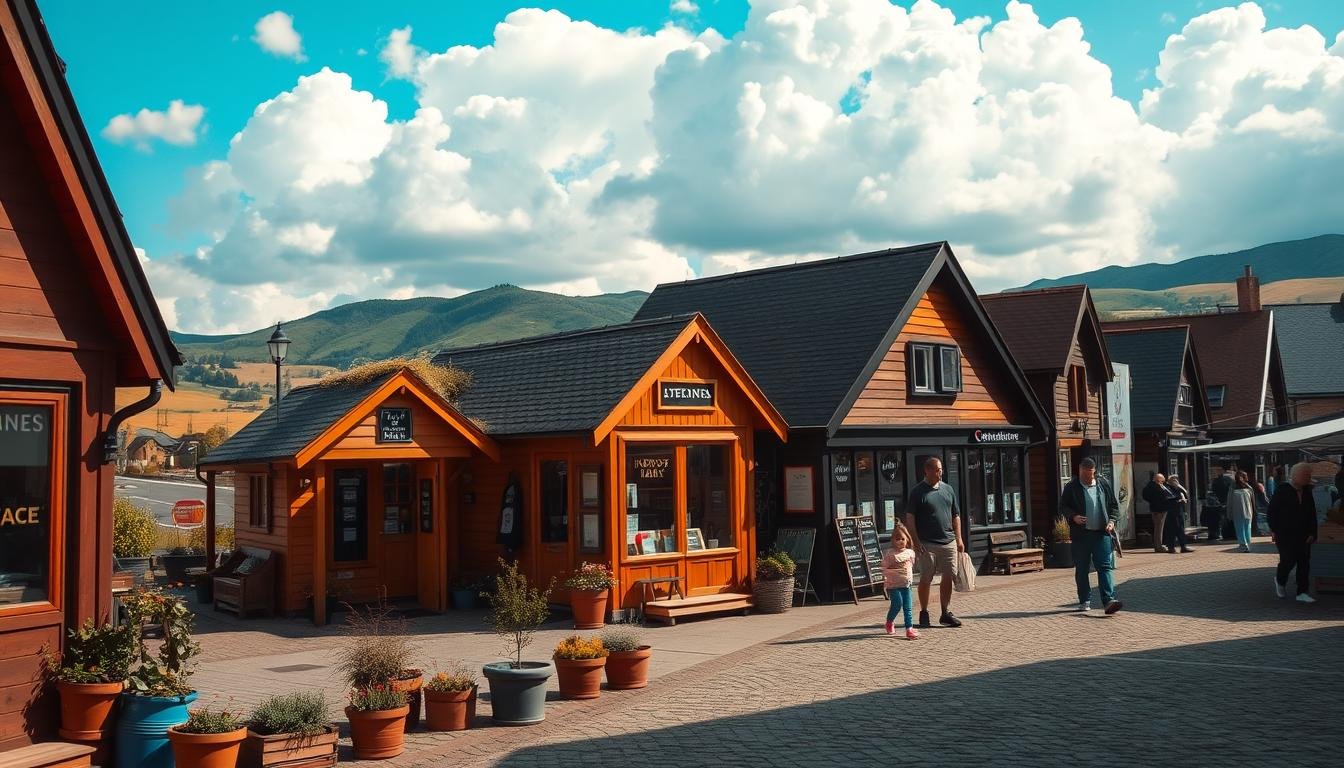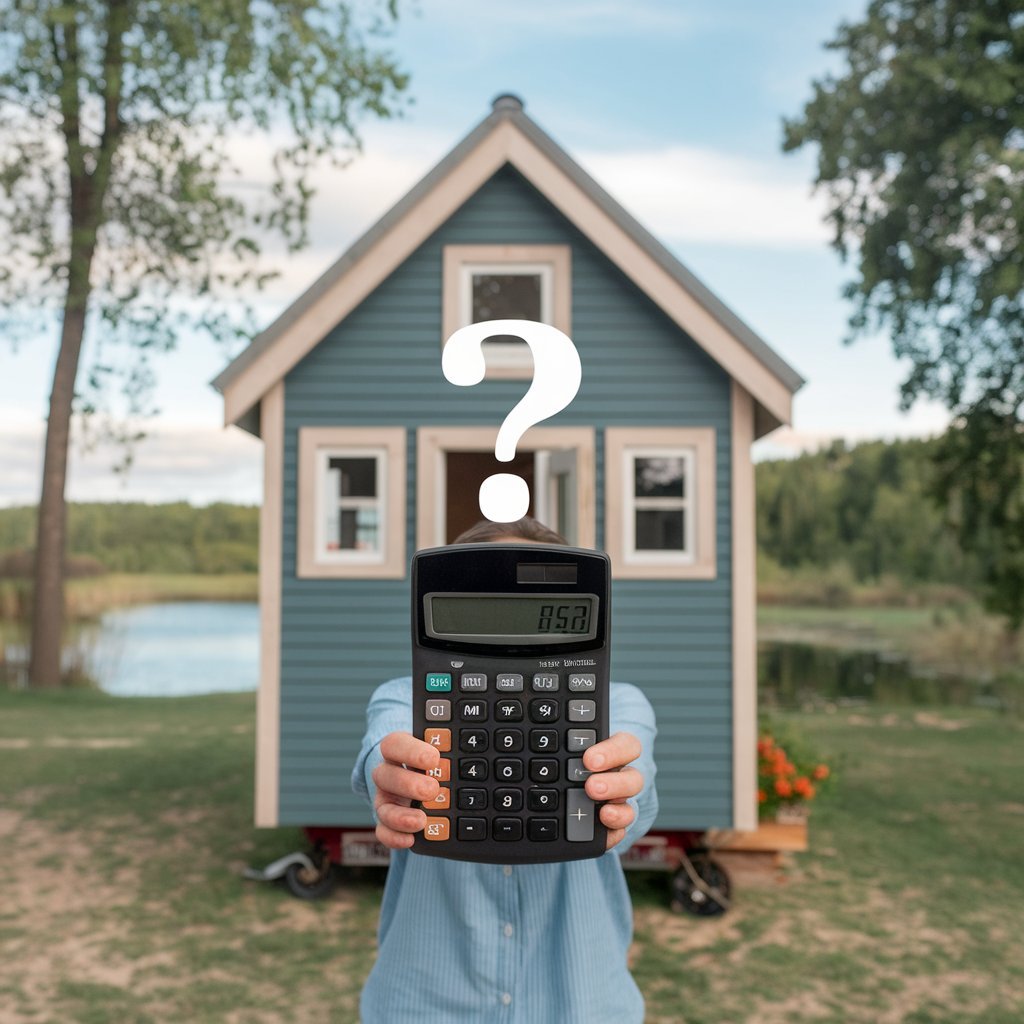The American dream of homeownership is evolving. For many, it now means embracing smaller, more efficient living spaces. John Kernohan, co-founder of the United Tiny House Association, notes demand surged after the 2008 recession and spiked again during the COVID-19 pandemic. Compact dwellings offer financial flexibility and simplicity, but navigating this market requires careful planning.
This guide breaks down the essentials for making smart decisions. Prices typically range from $30,000 to $150,000, depending on size and customization. Whether you prioritize eco-friendly designs or mobile capabilities, understanding your needs upfront prevents costly mistakes.
Preparation is key. From zoning laws to financing options, every detail matters. First-time buyers often overlook hidden challenges like storage solutions or utility access. We’ll help you balance practicality with creativity to maximize your investment.
Table of Contents
Key Takeaways
- Tiny home demand rose sharply after 2008 and during the 2020 pandemic
- Average costs range from $30k to $150k based on features
- Customization significantly impacts final pricing
- Proper research prevents common buyer pitfalls
- Local regulations affect where you can place your dwelling
- Compact living requires strategic space management
Understanding the Tiny House Movement
Modern homeowners are trading square footage for smarter, purpose-driven spaces. Take John Kernohan, who’s thrived in a 304-square-foot dwelling with his wife since 2011. His story reflects a broader shift: cities nationwide now view compact residences as practical answers to housing shortages and financial strain.
The Rise of Tiny Living
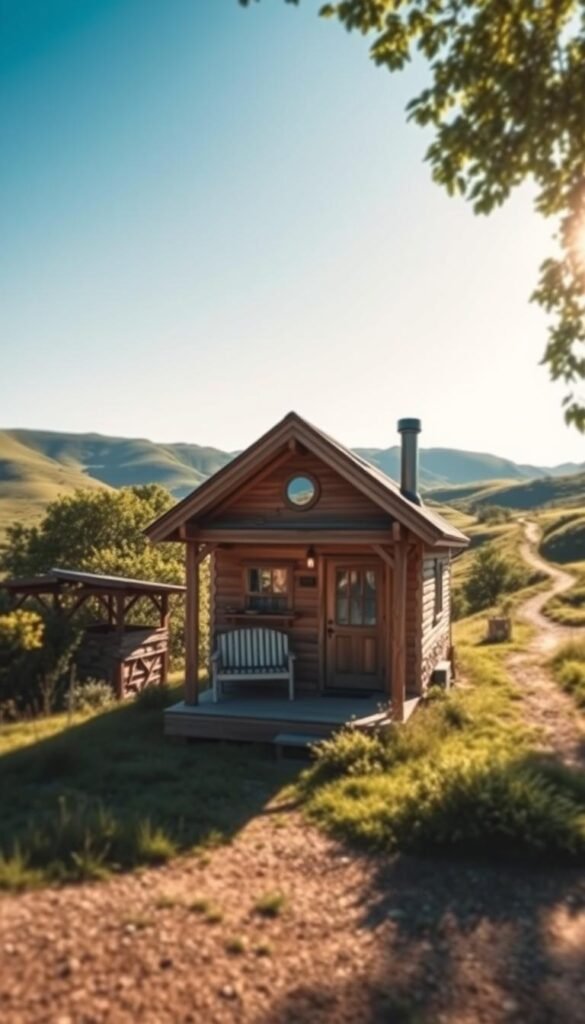
This trend gained traction after the 2008 financial crisis, as families sought cost-effective alternatives to conventional mortgages. The COVID-19 pandemic accelerated interest, with remote work enabling mobile lifestyles. Structures under 400 square feet – whether on wheels or foundations – became symbols of freedom from debt and clutter.
Economic and Lifestyle Benefits
Compact living slashes expenses. Initial costs average 50-80% less than traditional homes, while monthly utility bills often drop by 60%. Maintenance becomes manageable, freeing time for travel or hobbies. Environmentally, these spaces use fewer resources – some models operate entirely off-grid.
Beyond finances, simplified lifestyles reduce stress. Owners report stronger community ties and creative space solutions. Over 300 U.S. towns now permit accessory dwelling units, signaling growing acceptance. As Kernohan proves, living small doesn’t mean sacrificing comfort – it’s about prioritizing what truly matters.
Planning Your Tiny Home Blueprint
Smart layout design transforms compact living from cramped to comfortable. Every inch demands intentional choices – a 2-inch error in measurements could render appliances unusable. This phase determines whether your project becomes a sanctuary or a storage nightmare.
Creating a Functional Floorplan
Start with precise measurements of appliances and furniture. Professionals use 3D modeling to test layouts before building tiny structures. Multi-use areas like fold-down desks or lofted beds maximize vertical .
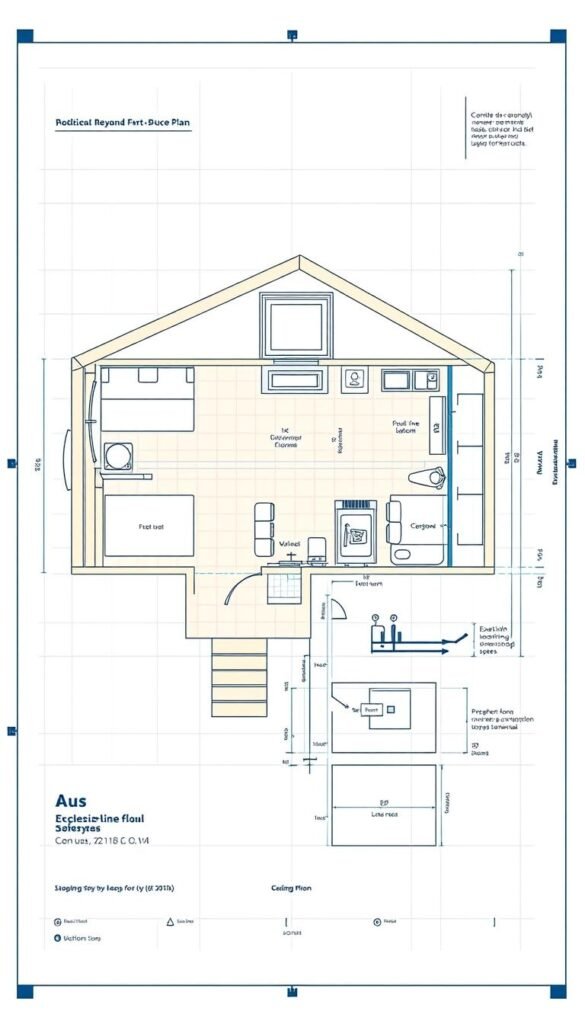
Consider traffic flow between zones. A well-planned kitchen triangle (sink-fridge-stove) saves 30% more movement than haphazard arrangements. Built-in storage under stairs or within walls keeps essentials accessible yet hidden.
Designing with Flexibility in Mind
Life evolves – your plan should too. Modular furniture systems adapt to changing needs, like converting office nooks to nursery spaces. One Colorado couple redesigned their 280-sq.ft. tiny home three times across a decade without structural changes.
Install removable partitions instead of permanent walls. This approach lets you reconfigure for new hobbies or family growth. Always allocate 15% of your as “flex zones” – blank canvases for future creativity.
Invaluable tiny house buying tips for First-Time Buyers
Mistakes in small-space living often reveal themselves only after move-in day arrives. Many discover airflow issues in lofts or realize their composting toilet needs more maintenance than expected. These oversights highlight why connecting with veteran residents proves essential.

Wisdom From Seasoned Residents
Those who’ve navigated compact living for years emphasize three critical factors most newcomers miss. First, climate control challenges vary dramatically by region – 68% of owners report unexpected temperature fluctuations in their first year. Second, storage needs evolve as lifestyles change, requiring adaptable solutions.
| Common Oversight | Owner Solution | Impact |
|---|---|---|
| Underestimating moisture control | Installing vented skylights | Reduces mold risk by 40% |
| Ignoring local zoning codes | Joining regional owner groups | Avoids 75% of legal issues |
| Fixed furniture layouts | Modular shelving systems | Increases usable space by 19% |
Community forums reveal surprising insights about daily routines. One Colorado couple redesigned their kitchen storage four times before finding an optimal system. Others stress the importance of testing layouts during different seasons before finalizing designs.
Financial surprises also emerge post-purchase. Nearly half of owners wish they’d budgeted more for land preparation and utility hookups. By learning from these lived experiences, newcomers can sidestep 63% of common frustrations according to recent surveys.
Budgeting and Financing Your Tiny Home
Financial planning becomes crucial when embracing compact living. HomeAdvisor data shows prices range from $8,000 for basic models to over $150,000 for luxury builds. Most buyers spend $45,000, but hidden costs like land prep or utility installations often surprise first-timers.
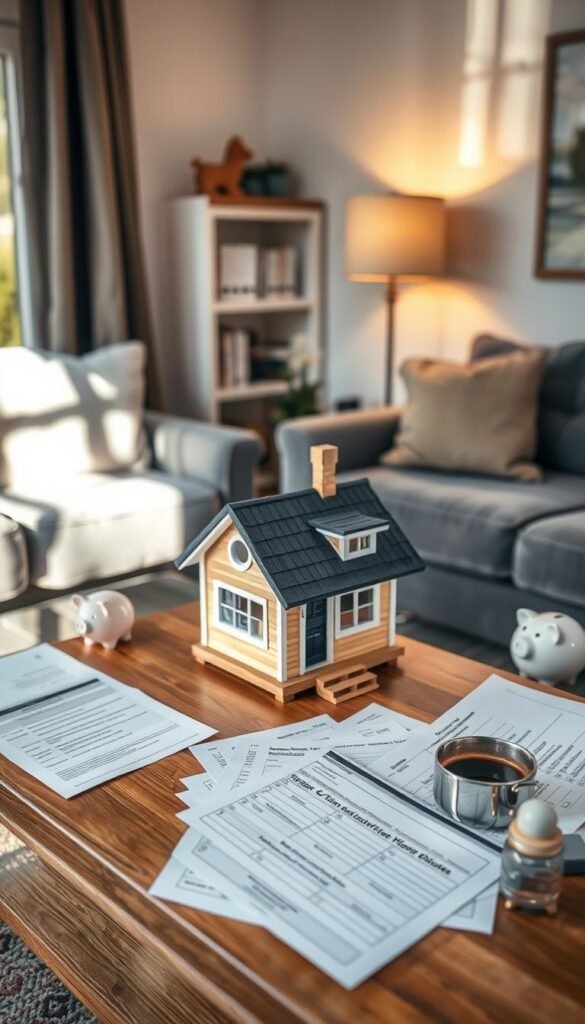
Mapping Your Money Strategy
Start by separating construction costs from ongoing expenses. Custom features like solar panels or premium materials can double your initial budget. Always allocate 15-20% extra for unexpected needs – 58% of projects exceed original estimates.
Creative Funding Solutions
Traditional mortgages rarely work for mobile dwellings. These alternatives help owners secure funds:
| Loan Type | Interest Rates | Terms | Best For |
|---|---|---|---|
| Personal Loan | 8-15% | 3-7 years | Quick approvals |
| RV Loan | 5-10% | 10-15 years | Wheeled units |
| Builder Financing | 6-12% | Custom terms | Turnkey projects |
Preparing for Financial Surprises
A $45,000 loan at 10% interest creates $956 monthly payments over five years – totaling $57,367. Factor in insurance, maintenance, and potential relocation fees. Smart buyers keep emergency funds equal to three months’ housing costs. You might also find our Tiny House Price Calculator to be useful.
Selecting the Right Builder or Contractor
Your choice of construction professionals determines whether your vision becomes a dream space or a costly headache. Alaska, founder of Tiny House Concierge, reports 42% of client issues stem from poor builder selection. A skilled team balances craftsmanship with clear communication, turning blueprints into livable realities.
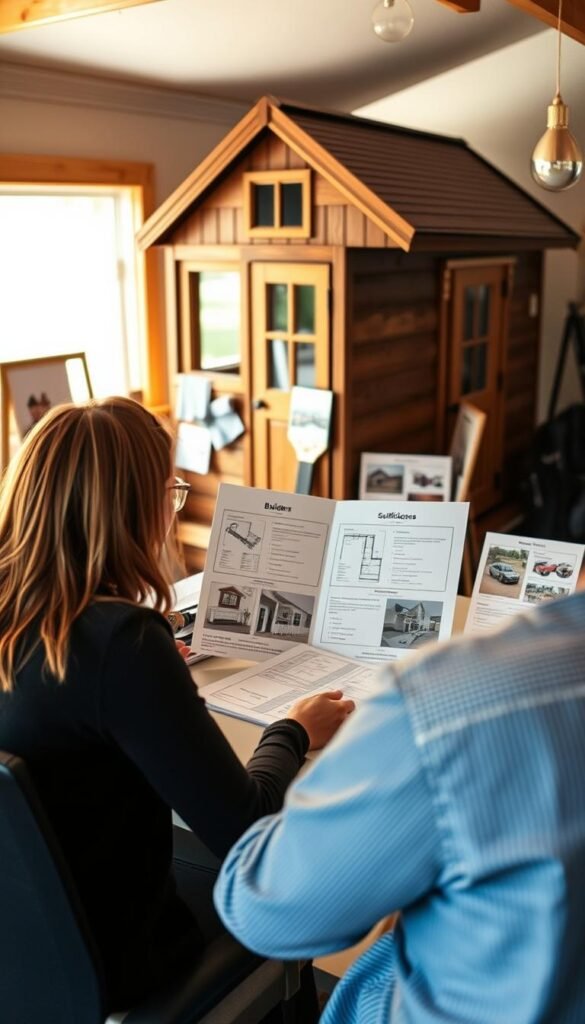
Researching Builder Reputation
Start by requesting references from three recent clients. Reputable companies gladly share success stories and address past challenges. Cross-check online reviews with Better Business Bureau ratings – gaps often reveal hidden patterns.
Watch for these warning signs in your search:
| Red Flags | Green Flags | Verification Steps |
|---|---|---|
| Uses stock photos | Offers live video tours | Reverse-image search portfolio |
| Demands 50% upfront | Uses phased payments | Review contract terms |
| No tiny home experience | Specializes in compact builds | Ask for project photos |
Evaluating Contract Terms and Quality of Work
Insist on detailed service agreements listing materials, timelines, and penalty clauses. Builders worth hiring explain technical details without jargon. One Texas couple avoided disaster by requiring weekly site inspections – they caught improper insulation before wall installation.
Prioritize contractors who:
- Provide lien waivers from suppliers
- Include warranty documentation
- Use moisture-resistant materials in bathrooms
Finalize nothing until visiting completed projects. Touch cabinet hinges, test drawer slides, and inspect ventilation systems. Quality shines in details most overlook.
Maximizing Space and Storage in a Tiny Home
Living efficiently in limited square footage demands smart design solutions. Clever layouts turn potential weaknesses into strengths, creating environments that feel both functional and inviting. Strategic choices in storage, furniture, and color schemes can dramatically enhance perceived space.
Innovative Storage Solutions
Vertical surfaces become goldmines in compact dwellings. Floor-to-ceiling shelving units provide 30% more capacity than standard cabinets. Recessed wall niches near beds or seating areas keep essentials within reach without clutter.
| Storage Type | Space Saved | Best Use |
|---|---|---|
| Under-stair drawers | 15-20 sq.ft. | Seasonal items |
| Wall-mounted shelves | 8-12 sq.ft. | Daily essentials |
| Ceiling racks | 5-7 sq.ft. | Bulky equipment |
Choosing Multi-functional Furniture
Convertible pieces serve multiple roles without crowding rooms. A dining table that becomes a workstation saves 9-12 square feet. Ottomans with hidden compartments replace coffee tables while storing blankets or books.
Utilizing Light and Color
Light-reflective surfaces amplify natural brightness. Semi-gloss white walls make rooms feel 10-15% larger. Glass tabletops maintain sightlines, while exposed-leg chairs create airy circulation paths. Strategic mirror placement doubles visual depth in narrow corridors.
Compact appliances complete the efficiency equation. 18-inch dishwashers and combination washer-dryer units perform essential tasks without monopolizing precious square footage. Every element works together to maximize utility while maintaining aesthetic harmony.
Navigating Hidden Costs and Additional Expenses
Owners often discover their budget spreadsheets need major adjustments after signing contracts. Beyond the structure itself, location logistics and specialized systems demand careful financial planning. A 2023 industry survey shows 73% of buyers exceed initial estimates by $12,000+ due to overlooked fees.
Understanding Extra Fees and Service Costs
Moving your dwelling introduces immediate expenses. Professional haulers charge $1.50-$3.25 per mile – a 500-mile relocation could cost $1,625. Specialty appliances add another layer: 18-inch fridges cost 40% more than standard models but use 65% less energy.
| Expense Category | Average Cost | Cost-Saving Tip |
|---|---|---|
| Appliance Repairs | $172 per service | Choose modular systems |
| Land Preparation | $2,800-$5,400 | Share utility trenches |
| Permit Fees | $350-$1,200 | Verify zoning first |
Planning for Land, Insurance, and Transportation
Parking solutions vary widely. Urban RV parks charge $1,200 monthly – rural land leases average $300. Mobile home insurance runs $600-$1,500 annually, covering theft and weather damage traditional policies exclude.
Utility connections often surprise owners. Off-grid solar setups cost $12,000-$25,000 upfront but eliminate monthly bills. Always budget 10% extra for code-compliant plumbing and electrical work local regulations require.
Conclusion
Successful compact living starts with immersing yourself in the community. John Kernohan emphasizes hands-on experience before committing. Attend regional festivals or rent a unit for a weekend trial. These steps reveal practical realities no blueprint can show.
Consultation with specialists bridges imagination and execution. Builders share insights about space optimization and material choices. Many offer virtual tours of completed projects, helping visualize your future setup.
“Your instincts guide better than any checklist,” notes tiny-living advocate Alaska. Custom solutions often outperform generic designs. Track seasonal light patterns or test storage systems during mock stays.
This journey rewards those who balance research with flexibility. Allocate time to compare financing options and land regulations. Each choice shapes your experience in profound ways.
With careful planning and trusted guidance, your path becomes clearer. Let curiosity lead the way – the right solutions emerge when you engage deeply with the process.


